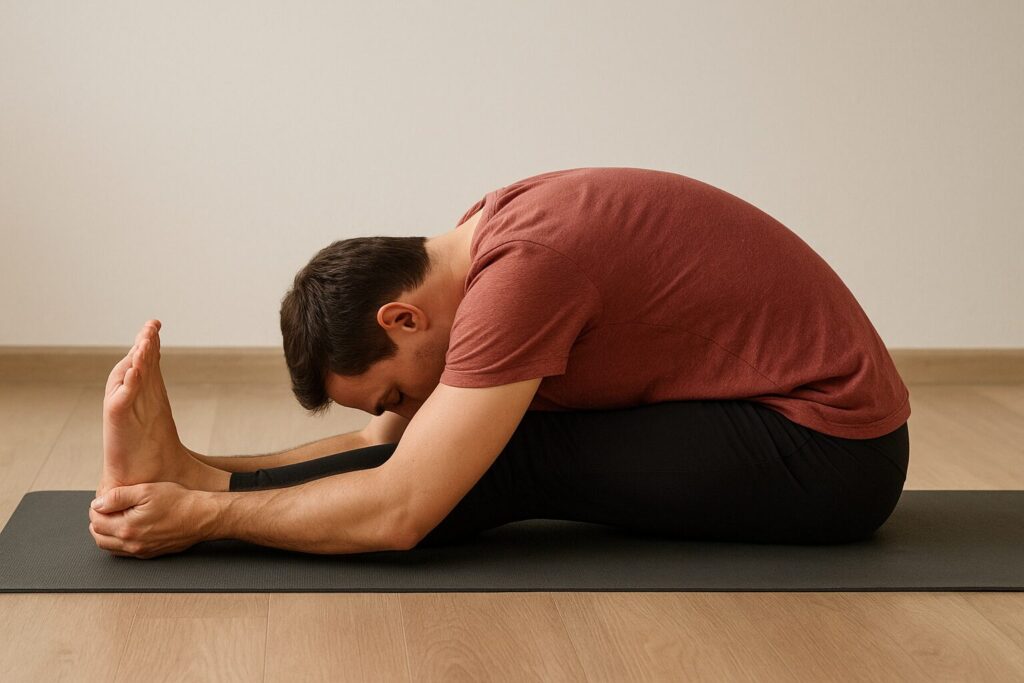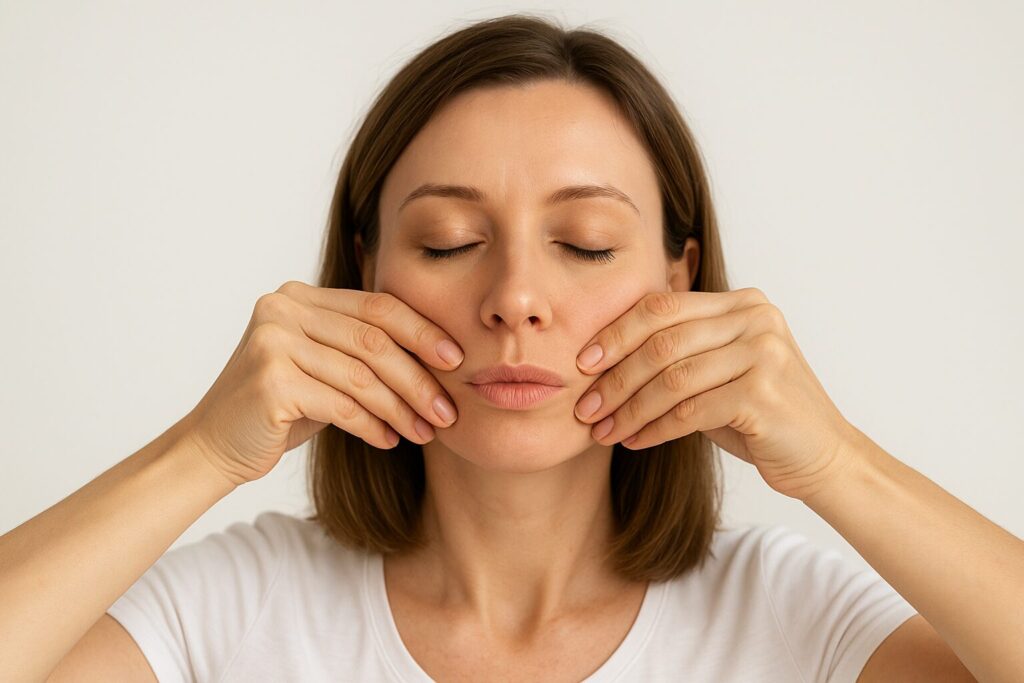PRANAYAMA – THE ART OF BREATH CONTROL IN YOGA
Introduction: In today’s hectic and fast-paced modern life, people often overlook the most powerful yet simple, inbuilt system we have, i.e., our BREATH. Without this, no living creature can survive. We have been constantly inhaling and exhaling, but we don’t care about this simple process that we have started from our birth and will end with death. Every inhale and exhale carries more than just oxygen; it carries the rhythm of life, and that is PRANA.
Various Yogis, Rishis, Munis, and Saints were on the search of this unique and God gifted technique which we are continuously enjoying. During the period of (1500- 500 BCE), the Rigveda and Pranayama can be traced back. In one of the texts of the Rigveda, we find a reference to breath control, i.e., meditation technique, but not in the form of PRANAYAMA.
From here, we could only find the hint of the importance of breath regulation as a means of achieving the heightened state of consciousness and spiritual awareness. Nobody knows exactly how old the practice is, but some scholars opined that members of Pre-Vedic society also practiced Yoga even before that time.
We get different names from different scriptures of PRANAYAMA and are still being used, the names are Pranasamyama, Pranasangrahana, Prananigraha, Prananirodha, Pavanabhyasa, Vayunirodha, etc.
During the period of the Rigveda, we get the term “Asu Niti”. Asu means breathe, and Niti means the way to control it. Therefore, we can say that during the Rigvedic period, Pranayama was practiced.
During the period of the Yajurveda, we get the reference of “Angira Sahitya” which teaches the practice of how to improve Physical and Mental strength and increase lifespan.
During the period of the Atharva Veda, importance was put on the practice of controlling the Prana and Apana Vayu skillfully to lead a healthy life of more than 100 years.
Later on, we get the reference to Pranayama in the Gita.
Apane juhvati praṇam praṇe apanam tathapare
Praṇa apana-gati ruddhva praṇayama-parayaṇaḥ
Apare niyataharaḥ praṇan praṇeṣhu juhvati
Sarve ’pyete yajna-vido yajna-kṣhapita-kalmaṣhaḥ
The meaning is:
Some yogis offer the incoming breath (Praṇa) into the outgoing breath (Apana), and others offer the outgoing breath into the incoming breath—thus practicing the control of breath (Praṇayama) by restraining the movement of both.
Others, who are disciplined in food intake (Niyata-Ahara), offer the vital life airs into the life force itself through regulated breathing.
All these practitioners understand the spirit of sacrifice (yajna), and their sins are destroyed through such self-discipline and sacrifice.

01. What is Pranayama?
Pranayama is the combination of two Sanskrit words (Prana and Ayama). Prana is the life force/vital energy, and the fundamental basis of what it is, it was, and it will be, and Ayama is to control. Therefore, the word Prayama is the process of controlling the Life Force/Vital energy.
In other words, it is a unique technique of controlling the breath. Breathing is the combination of inhalation and exhalation, and also a process to balance the body, calm the mind, and energize the body.
According to sage Patanjali, “it is the gap between inhalation and exhalation”. It is generally considered to be the practice of controlling inhalation and exhalation combined with retention. However, truly speaking, it is only retention. Inhalation and exhalation are the methods of inducing retention.
02. The importance of Breath in Yoga: Breath is not only a physical function but also combines the body and mind, and moreover, reflects our mental and emotional state. Breathing is a continuous process that supports our physical movement, mental clarity, and helps to properly function the internal organs.
In yoga, breath is the foundation of every step of our physical movement and posture. Proper breathing helps to increase oxygen flow to muscles and organs, enhances flexibility and decreases the risk of injury, synchronizes the breath with movement, and prepares the mind for meditation and deeper internal work.
03. Importance of Breath in Daily Life: In our daily life, breath is the indicator of our feelings. When we are stressed, we breathe rapidly, and when we are relaxed, we breathe smoothly. If we can control our breath, we can achieve profound benefits such as:
- We can reduce stress and anxiety
- We can respond calmly in emotional situations
- We can improve our focus and concentration at work and studies
- We can boost our energy level
- We can improve our sleep quality by activating the parasympathetic nervous system.
If we can practice mindful breathing for a few minutes regularly, we can reset our nervous system, sharpen our minds, and improve our overall well-being.
04. The Science behind Pranayama: Pranayama or breath control influences all the activities of the body by energizing every cell, and most importantly, it is closely associated with the performance of the brain. It has been noticed that every healthy human being breathes about 15-16 times per minute, and throughout the day, it is approximately 21,600 times. It is to be noted that respiration fuels the burning of oxygen and glucose, which produces energy within the body and energizes every muscular contraction and expansion, glandular secretion, and proper functioning of the brain.
Most people, it is seen, breathe incorrectly. They use only a small portion of their lung capacity. Here, breathing becomes generally short, and therefore, the oxygen intake is less, which causes various ailments. By regular practice of Pranayama, we can get rid of Asthma, Hypertension, and Chronic Obstructive Pulmonary Disease, and better functioning of the brain, heart, and muscles.
By regular practice of this exercise, we can lower the cortisol level (a Hormone that is responsible for stress), reduce the symptoms of depression, anxiety, and insomnia, and improve mental clarity, focus, and emotional balance.
Therefore, when we breathe consciously, we can take control of our internal systems, allowing the body to heal, the mind to settle, and the spirit to rise.
05. Benefits of Pranayama: Regular practice of Pranayama provides an innumerable number of benefits, such as physical, mental, and emotional. This ancient yogic technique helps to calm the nervous system for improving focus and boosting immunity. Modern science has also found a wide range of benefits for the mind, body, and soul.
i. Reduces Anxiety and Stress: The parasympathetic nervous system is triggered by it, which promotes relaxation and healing. Deep breathing encourages a clear, peaceful frame of mind and lowers the production of the stress hormone cortisol. Stress-relieving techniques like Bhramari and Anulom Vilom are very beneficial.
ii. Improves Heart and Lung health: By regularly practicing Pranayama, we can :
- Lower Blood Pressure
- Reduce heart rate
- Increases Lung capacity
- Improves oxygen intake
iii. Sharpen focus and mental clarity: By increasing the Oxygen supply to the brain, it enhances concentration, memory, and mental clarity.
iv. Helps to better sleep: By practicing Pranayama, we can calm the nervous system and prepare the body for better sleep. We can also reduce insomnia and improve sleep quality if we practice Pranayama for a few minutes before bedtime.
v. Boosts Immunity: This practice also enhances the efficiency of the lymphatic system and thereby improves the circulation, reduces inflammation, supports the body’s natural defense system mechanism, and helps to fight infections.
vi. Increases Energy and Vitality: awakens the life force energy. Pranayama, like Kapalbhati and Bhastrik, boosts the energy level, improves alertness, and fights fatigue.
vii. Supports emotional balance: Through this, we can release emotional tension, improve our mood, and build patience and inner strength.
viii. Deepens Meditation and self-awareness: Pranayama is usually practiced before Meditation for quieting the mind and preparing for deeper awareness. It connects the mind, body, and spirit to create space for reflection and inner peace.
ix. Increases Life Span: The most important benefit is increasing Life Span. By influencing the quality of life, the length or quantity of breathing is also influenced by the rhythm of respiration. Our ancient Yogis noticed that animals with slow breathing rates, such as elephants, turtles, and pythons are enjoy a long life span, whereas those with a high breathing rate, like birds, cats, dogs, etc., can live a few years. Therefore, the animals with a slow breathing rate can live a longer life, and those with a faster breathing rate can live a shorter period. The science behind this: Respiration is directly related to the heart. A slow breathing rate keeps the heart stronger and contributes to a longer life.
From the above, we can conclude that Pranayama is more than just a breathing technique, and also, we can broadly explain Pranayama as a unique tool to combine health, balance, and mindfulness. Daily practice of Pranayama for a few minutes can lead to a big change in our overall well-being.
06. Types of Pranayama: There are four aspects of Pranayama:
- Pooraka (Inhalation)
- Rechaka(Exhalation)
- Antar Kumbhaka (Internal breath retention)
- Bahir Kumbhaka ( External breath retention)
- Kevala Kumbhaka
All these aspects are categorized into the Primary stages and the advanced stages. In the primary stage, the practitioners can practice Pooraka, Rechaka, and Kumbhaka. In the advanced stage, the practitioners can practice Kevala Kumbhaka. This stage of Pranayama occurs during higher stages of Meditation. During this stage, the lungs stop functioning completely and respiration ceases.
Breathing is also divided into five major aspects:
- Natural Breathing: This is a simple technique that starts from our birth and continues until death. It is a natural respiratory system and breathing pattern.
- Abdominal Breathing: Abdominal breathing can be practiced by expanding and contracting the action of the diaphragm.
- Thoracic Breathing: Thoracic breathing utilizes the middle lobes of the lungs by expanding and contracting the rib cage.
- Clavicular Breathing: It is only used under extreme physical exertion and when experiencing obstructive airway diseases, life Asthma.
- Yogic Breathing: Yogic breathing is used to maximize inhalation and exhalation. The purpose is to control the breath, rectify poor breathing habits, and increase Oxygen intake.
These Yogic Breathing types (Pranayama) are:
- Nadi Sodhana Pranayama
- Sheetali Pranayama
- Seetkari Pranayama
- Bhramari Pranayama
- Ujjayi Pranayama
- Bhastrika Pranayama
- Kapalbhati Pranayama
- Moorcha Pranayama
- Surya Bheda Pranayama
07. Side effects of Pranayama: There are generally very less side effects noticed. For beginners, various symptoms can be seen. These are caused due to the process of purification and excretion of toxins. During this purification and excretion of toxins, practitioners may encounter itching, tingling, heat or cold, lightness or heaviness. These feelings are generally temporary, but if they continue for a longer period, the practitioners are advised to consult with the Yoga Teacher.
08. How to practice Pranayama: In the traditional texts, there are several rules and regulations relating to this practice. The important points are to exercise moderation, balance, and common sense with regard to inner and outer thinking and living. Whereas, those who seriously want to take up the advanced practices, the guidance of a properly certified Yoga Guru is required.
Some of the important guidelines are appended hereunder:
- Breathing: Breathing should only be through the nostrils and not through the mouth. Nostrils should be cleaned regularly by Jal Neti prior to practicing Pranayama.
- Time of Practice: The ideal time to practice this is early morning or just after sunset. But, tranquilizing Pranayama should be practiced before going to bed.
- Place of Practice: The place should be quiet, clean, pleasant, and well ventilated. The place should not be bumpy and without the fear of any insects.
- Sitting Position: A comfortable sitting posture is required for sustainable meditation and to enable comfortable and efficient breathing. Siddhasana is the best posture for practicing it.
- Clothes: Clothes should be comfortable, preferably made of cotton fibers. The body should be covered with a thin blanket during cold.
- Empty Stomach: Meals should be taken at least three to four hours before practicing Pranayama. Meals should be digestible.
- Diet: A balanced diet consisting of proteins, carbohydrates, fat, vitamins, and minerals is suitable for practitioners. The practitioners should also take grains, pulses, vegetables and fresh fruits, milk, etc. are highly recommended.
- No Smoking: The Pranayama practitioners are advised not to smoke.
09. Pranayama in Modern Health Care: The modern health care system has started recognizing Pranayama as a complementary therapy. Doctors, Researchers, and Therapists are recommending practicing Pranayama alongside their conventional treatments for supporting mental health, heart health, and overall well-being.
10. Conclusion: Breath better to live better: Important turning points along the way demonstrate how this has changed from an old spiritual practice to a modern wellness tool. From its origins in ancient religious writings to its contemporary position as a crucial component of global health initiatives, pranayama is constantly evolving while upholding its fundamental ideas.
Knowing these historical processes gives us important background for understanding why many people use pranayama as a way to improve their well-being, reconnect with their inner selves, and restore balance as we negotiate the challenges of modern life, which is characterized by fast changes and rising stress.
Examining its lengthy history helps practitioners understand the depth of this age-old discipline as well as its applicability in building resilience in our fast-paced, turbulent environment.
FAQ:
Question No. 1 – Can I do Pranayama without Yoga Asana?
Ans: Yes, you can perform this without performing Yoga Asana. Since Pranayama is a separate limb of yoga, independent from physical postures. According to Patanjali’s Yoga Sutras, it is the fourth limb of the eight-fold path of yoga (Ashtanga Yoga), following asanas but not dependent on them.
Question No: 2 – Is Pranayama safe during pregnancy?
Ans: Yes, it is safe during pregnancy. It is safe if it is practiced mindfully and with the guidance of a Yoga Teacher. In fact, gentle breathing techniques can offer many benefits to pregnant women, such as stress relief, better oxygen flow, and emotional calm. But some of the Pranayama techniques are to be avoided:
Kapalbhati Pranayama, Bhastrika Pranayama, Breath Retention, and Rapid and forceful breathing techniques.
Question : 3 – What is the difference between Deep Breathing and Pranayama?
Ans: Deep Breathing is the process of breathing slowly and fully into the lungs. It’s a natural, unstructured method to calm the nervous system, often used in relaxation techniques.
Pranayama: Pranayama includes some specific techniques, patterns, and rhythms to direct the flow of Prana (Life force energy) through the body.
Question No: 4 – Can Pranayama be practiced during menstruation?
Ans: Yes, Pranayama can be practiced during menstruation. But with some modifications and precautions. Pranayama can help reduce cramps, balance mood swings, and support relaxation during your cycle. However, not all techniques are suitable, and it’s essential to listen to your body.
Question No: 5 – Do I need a Yoga Teacher to learn Pranayama?
Ans: Yes, a well-trained Yoga Teacher is needed to learn Pranayama at the beginning stage. A Yoga Teacher can help you in the following ways:
- Will teach you the proper technique
- Can give you personalized guidance
- Help you avoid the common mistakes
- Can watch your progress in learning
- A knowledgeable teacher can help you understand and manage emotional or energetic shifts that may arise.







5 thoughts on “PRANAYAMA – THE ART OF BREATH CONTROL IN YOGA”